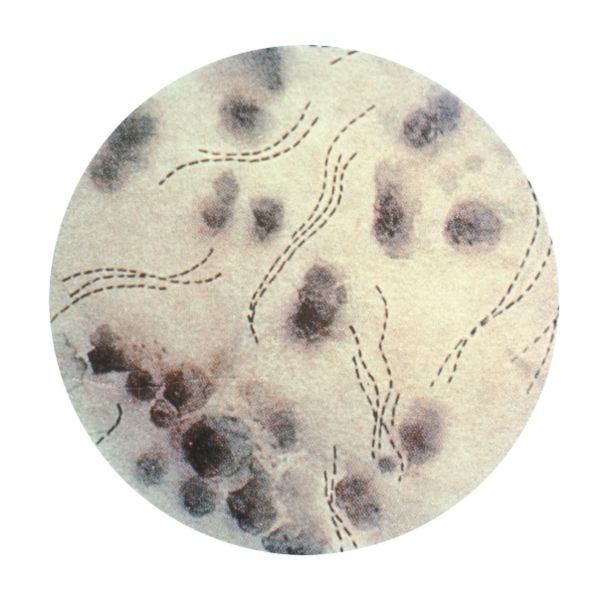Haemophilus ducreyi
| Haemophilus ducreyi | ||||||||||||||
|---|---|---|---|---|---|---|---|---|---|---|---|---|---|---|
 Photomicrograph of H. ducreyi
| ||||||||||||||
| Scientific classification | ||||||||||||||
| ||||||||||||||
| Binomial name | ||||||||||||||
| Haemophilus ducreyi (Neveu-Lemaire 1921) Bergey et al. 1923 |
Haemophilus ducreyi is a fastidious Gram-negative streptobacillus causing the sexually transmitted disease chancroid characterized by painful sores on the genitalia. nl:Haemophilus ducreyi Template:WikiDoc Sources
Antimicrobial Regimen
- 1. Chancroid[1]
- Preferred Regimen (1): Azithromycin 1 g PO in a single dose
- Preferred Regimen (2): Ceftriaxone 250 mg IM in a single dose
- Preferred Regimen (3): Ciprofloxacin 500 mg PO bid for 3 days
- Preferred Regimen (4): Erythromycin base 500 mg PO tid for 7 days
- Note: Patients should be tested for HIV infection at the time chancroid is diagnosed. If the initial test results were negative, a serologic test for syphilis and HIV infection should be performed 3 months after the diagnosis of chancroid.
- 1.1 Follow-up
- Patients should be re-examined 3–7 days after initiation of therapy. If treatment is successful, ulcers usually improve symptomatically within 3 days and objectively within 7 days after therapy. If no clinical improvement is evident, the clinician must consider whether 1) the diagnosis is correct, 2) the patient is coinfected with another STD, 3) the patient is infected with HIV, 4) the treatment was not used as instructed, or 5) the H. ducreyi strain causing the infection is resistant to the prescribed antimicrobial.
- Clinical resolution of fluctuant lymphadenopathy is slower than that of ulcers and might require needle aspiration or incision and drainage, despite otherwise successful therapy. Although needle aspiration of buboes is a simpler procedure, incision and drainage might be preferred because of reduced need for subsequent drainage procedures.
- 1.2 Management of sex partners
- Regardless of whether symptoms of the disease are present, sex partners of patients who have chancroid should be examined and treated if they had sexual contact with the patient during the 10 days preceding the patient’s onset of symptoms.
- 1.3 Pregnancy
- Ciprofloxacin presents a low risk to the fetus during pregnancy, with a potential for toxicity during breastfeeding. Alternative drugs should be used during pregnancy and lactation
- 1.4 HIV Infection
- Persons with HIV infection who have chancroid should be monitored closely because they are more likely to experience treatment failure and to have ulcers that heal slowly. Persons with HIV infection might require repeated or longer courses of therapy, and treatment failures can occur with any regimen.